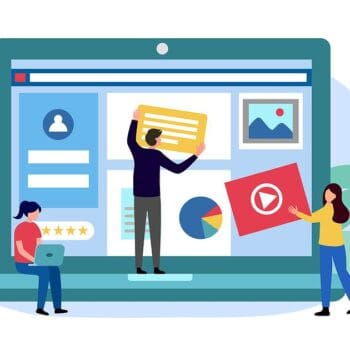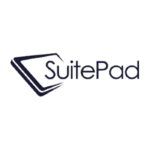 Increasingly, we live in a deeply digital, on-demand world. As such, the interconnected realms of web design and UX are constantly evolving and growing — and 2023 is poised to be another year of massive change. Given the realities of intense competition and the continued expansion of digital commerce, your hotel’s website is (somewhat ironically) faced with a binary choice: keep up or be left behind. Demand for travel experiences is only ramping up this year, which means your guests’ need for a fast, intuitive, and personalized website experience is also growing.
Increasingly, we live in a deeply digital, on-demand world. As such, the interconnected realms of web design and UX are constantly evolving and growing — and 2023 is poised to be another year of massive change. Given the realities of intense competition and the continued expansion of digital commerce, your hotel’s website is (somewhat ironically) faced with a binary choice: keep up or be left behind. Demand for travel experiences is only ramping up this year, which means your guests’ need for a fast, intuitive, and personalized website experience is also growing.
First impressions count – and so does easy navigation
Many hoteliers assume that the classic landing page or “home page” of their property (i.e., the initial content that appears when a user navigates to the website) is a perfunctory throwaway; just a place to post a few photos and a short introduction to the hotel. In reality, this may be the first-time a guest interacts with you. And first impressions count! So don’t think of your property’s home page as the cover of a book.
An engine for revenue
Speaking of the booking link, it should be prominent. It’s important to remember that a hospitality website serves as your hotel’s core revenue generation engine. An optimized online presence is a powerful storefront, and converts the hotel website into its most important sales channel.
Since many guests are hoping to make a decision about where to stay quickly, they may want to skip ahead to the end of their experience not long after starting it. So having a “Book Now” or “Check Availability” link displayed right up top serves as a convenient call to action — and of course, that’s the action you want them to take.
Incorporate your hotel’s USPs
Let’s face it: if your hotel is located in a destination people want to travel to, chances are you’re in constant competition for bookings. This means your hotel’s website needs to distinguish your property from others in the area by offering something unique. Reason being, while it’s tempting to assume a guest will always simply opt for the lowest price, that doesn’t necessarily wind up being the case. Because of this, your property’s online presence also needs to prominently offer what’s often referred to as a “unique selling proposition”, (or “USP”). In essence, that means letting your prospective guests know what sets your property apart; giving them an indication of what they can look forward to when they arrive.
This can take several forms, including:
- Location: Is your hotel in close proximity to area points of interest? If guests can easily get to spots
- that may be the reason they came to your city (e.g., convention centers, airports, local
- attractions, etc.), then they’ll want to know that.
- Amenities: What value-adds does your property offer? On-site dining, recreation, shuttle service, petfriendliness, on-site pools or fitness centers — guests looking for more than a standard
- stay will appreciate information on the extras up-front.
- Intriguing features: Many hotels are leaning into perks and quirks; things like “lending libraries” filled with fun travel gear, sharing stations with area food and drink specialties, themed rooms, or unique décor that reflects local art and culture.
- Historic interest: Does your property have an interesting past? Maybe it’s a converted industrial building, former artists’ enclave, or once hosted a prominent historical event. Guests enjoy the chance to feel like a part of something bigger.
- Guest comforts: Still other visitors are looking for the plushest experience possible. If your hotel is a prestige property, don’t be afraid to lean into the luxury. Guests more concerned with comfort and service than costs will appreciate it.
Regardless of what makes your hotel distinct from others, it’s a certainty that whatever it is will appeal to the guests you most want to attract.
Build trust with your brand
Since your website is most likely the first and most frequent avenue through which prospective guests will interact with your property (at least, until check-in), it’s crucial to foster peace of mind ahead of time. If guests don’t feel secure or appreciated, they’ll look elsewhere.
Does your property offer secure parking, or key-restricted lobby access? That’s worth mentioning on your website for the security conscious. Do you offer flexible rescheduling or cancellations? It’s important to highlight this so guests can book with confidence. Even employing soft language in the copy and calming color theory in the branding palette helps guests to feel good about selecting you.
Prioritizing personalization
Another way to build trust is via personalization — which is shaping up to be one of the most prominent emerging trends for the future of hospitality. Guests always feel valued when they understand they’re more than just a booking. Permitting guests the ability to customize certain aspects of their stay via your website, afords a level of warmth that will be remembered (which means thinking beyond just extra pillows or turn-down service).
Many properties are now building in portals that allow guests to “tweak” aspects of their stay to their liking either during, or after the reservation. By offering features like custom toiletry menus, preferred types of snacks or beverages in the minibar, baby or child extras (e.g. cribs, changing tables or activity books), or even tickets to local attractions offered as part of a premium package, your hotel can extend a level of welcome any guest will appreciate.
Engage at the point of inspiration
Overall, offering the information your guests are looking for is all in service of a clear goal. Specifically: to earn their business. So affording guests simple and direct ways to view the spaces you have available and make booking decisions is absolutely key.
There are several ways to do this that align both with what guests have come to expect, and with emerging design/navigation trends. Among them:
- Option comparison: Clearly highlighting differences in aspects like square footage, number and type of beds, view, and in-room features, guests can choose what’s most important to them. A simple icon set can offer this info at a glance.
- Clear pricing: Although cost often isn’t the first concern guests have, it typically factors in. So transparent pricing is helpful. It’s also beneficial to include any applicable fees or taxes. No guest likes surprise hidden charges at the last moment.
- Clean imagery: Being able to get a sneak peek of a given space both adds value and builds anticipation. So, employing clear and current optimized imagery of available rooms is something guests will appreciate when it comes to planning. If your property has the budget and digital bandwidth, video snippets are also increasingly being built into many websites to offer guests sweeping “virtual tours” of your hotel’s high points — further inspiring engagement.
- Sharing options: This is an aspect of the booking process that’s often overlooked, but shouldn’t be. Offering guests a way to resume a search that was started in one place but may pick up in another is an appreciated convenience. Guests may also be looking to share their search with friends, co-workers or family. So making sharing an easy feature is a highly recommended practice.
- Finding favorites: Additionally, permitting guests to click an icon that designates a “favorites” functionality (which allows their preferred accommodations and/or features to be easily earmarked for future reference) means they’ll be able to easily pick up where they left off any time prior to making a final booking decision.
Simplify & summarize
Booking a stay at your hotel should be a direct and simple prospect for guests. Still, since making a selection is often a multi-step process, it’s important to offer a summary of the guest’s experience prior to asking them to confirm the booking. That way, if they made any mistakes during the selection process, they have an opportunity to correct them before locking in their choices. This not only works toward further trust-building, but also saves potential hassles on the hotel’s end that could arise from guests needing to make changes after the fact.
That means concisely reiterating information like:
- The dates of the stay
- Type and size of room booked
- Payment method used
- Total of charges, and when they’ll occur (e.g., immediately, or at check-in)
- Reference number
Overall, it’s important to think like a guest for the purposes of this part of the process. Offering a rundown of their choices and what they’re about to agree to prior to closing the transaction helps to avoid issues and confusion later.
Mobile still matters
Although hardly a new trend per se, cross-platform considerations remain key. When crafting your online presence, thinking only of how your content appears on large screens is an understandable pitfall. However, current digital traffic statistics overwhelmingly indicate that your prospective guests are far more likely to both discover and engage with you using mobile devices. So it’s incumbent upon hoteliers to ensure that websites are just as fast to load and as easy to navigate and interact with in a palm-sized format as they are from a desk. If your site takes too long to load, or has clunky navigation on mobile? Guests will look elsewhere, and you’ve potentially lost a booking.
Final thoughts
Ease of experience and personalization has emerged as the most crucial components of any online interaction in 2023 — especially as it pertains to transactional traffic. Because of this, it should be a top priority of any hospitality entity to ensure that prospective guests are able to enjoy a hassle-free undertaking when navigating an online presence.




















